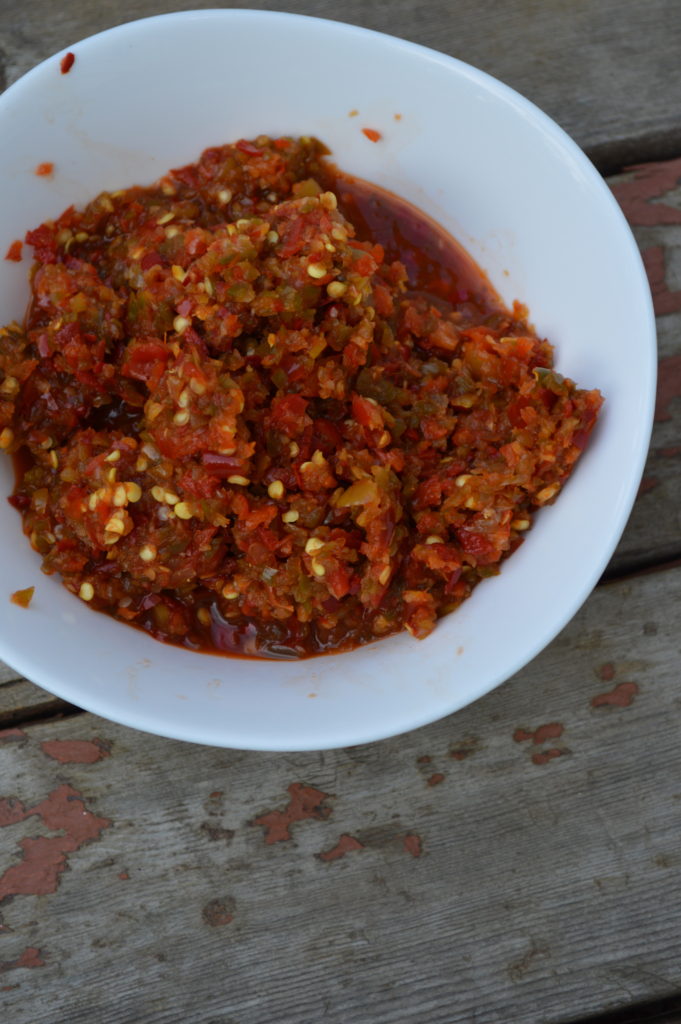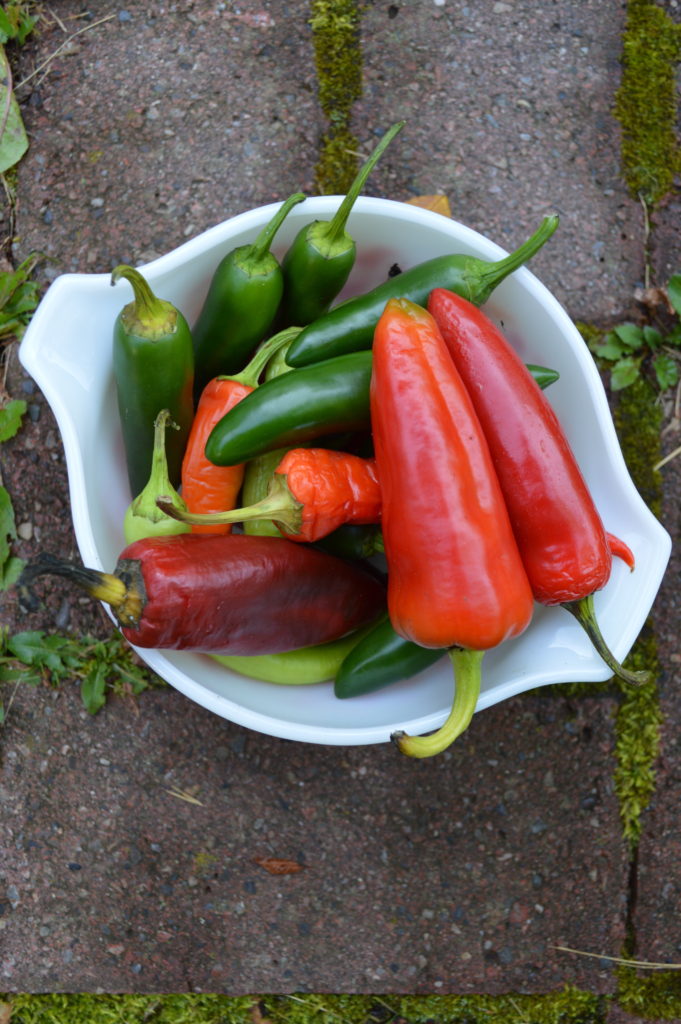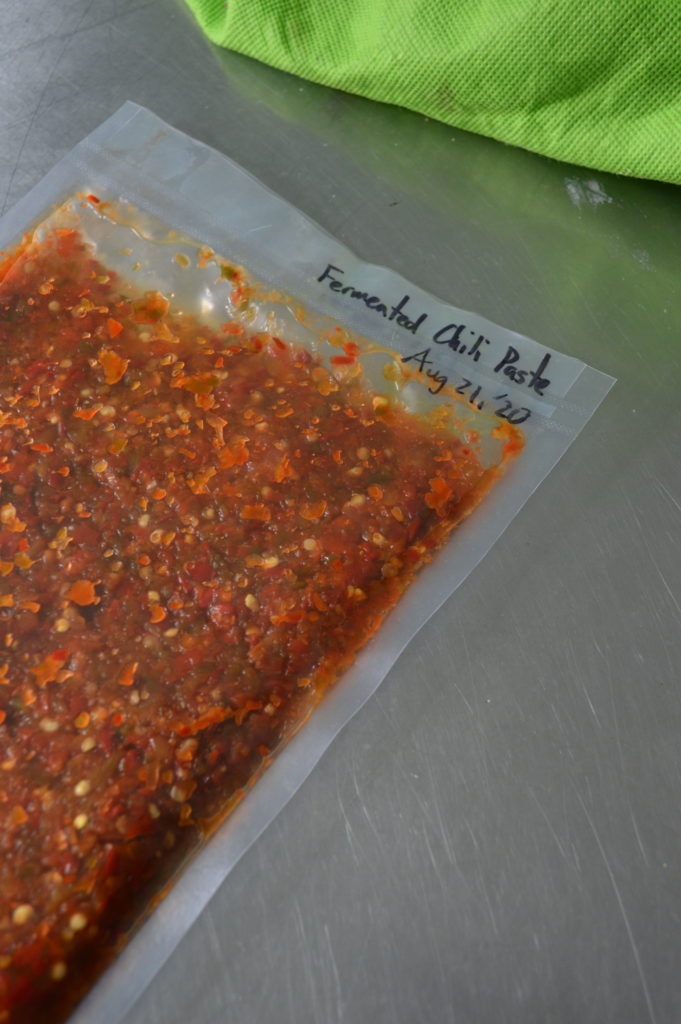
With so many peppers coming from the garden and fermentation on the brain I wanted to try my own fermented chili paste. My recipe is very much like sambal in terms of ingredients and consistency, though sambal isn’t usually fermented. Korean gochujang is a fermented chili paste, but it includes a large proportion of starches like rice, soybean, and malted barley and is not a straight lacto-fermentation. So this preparation isn’t really of a traditional style, but it turned out quite good and I can definitely see it becoming a pantry staple.
One of the main reasons I think I’ll make this every year: you can process a large quantity of peppers very quickly. Simply chop coarsely, pulse a few times in a food processor, toss with salt, and then either vacuum pack or weigh down in a crock and forget about for two weeks or longer. For more info on this style of ferment you can read my post on lacto-fermented pickles. After two weeks transfer to the fridge and it will keep indefinitely. No cooking, no canning, and it’s as versatile and tasty as any store-bought hot sauce.

The exact heat of your paste will depend on the peppers you use. The lacto-fermentation develops great balancing acidity. For a slightly looser, more sauce-like consistency I’ve also done some batches with a bit of tomato added. You could also add oil or tomato after the ferment.
I love how this chili paste incorporates into dishes without having to be cooked like most chili powders and pastes. For instance: smash this chili paste into some feta cheese, stir in a bit of olive oil and chopped parsley, and you have a ridiculously fast and ridiculously delicious mezze to put on Greek pitas.[1]
Fermented Chilli Paste
Formula
- 85% hot chili peppers
- 10% onion, yellow or white, peeled and coarsely chopped
- 5% garlic clove
- 2% kosher salt
Ingredients
- 265 g whole hot chili peppers, stems removed, coarsely chopped
- 31 g onion, yellow or white, peeled and coarsely chopped
- 16 g garlic clove
- 6.2 g kosher salt (2% of the weight of the vegetables)
Procedure
- Combine all ingredients in the bowl of a food processor. Process to a paste.
As I described in my post on lacto-fermentation, there are two methods of packing ingredients for fermentation.

Vacuum-Sealing Method
- If you’re fortunate enough to have a vacuum sealer, simply pack the ingredients in a bag and seal. Keep at room temperature for at least two weeks.
- After two weeks the bag should have puffed slightly with the gases formed by the fermentation. Open the bag and taste the chili paste. If you are happy with the acidity, transfer to a mason jar. This will store in the fridge for a year or more. If you want more acidity you can re-seal the bag and store another week at room temperature.

Submersion Method
- As for traditional sauerkraut, we weigh down the ingredients so that they are submerged in the brine that forms from their combination with salt. It’s a little trickier for this finely-processed paste than for sliced cabbage, because any small bitties that can slip by the weight plate will float to the surface. The good news is that this mixture is much less prone to surface scum and mold on account of the capsaicin concentration.
Yield: 2 x 240 mL mason jars fermented chili paste

Footnotes
- Here’s a formal recipe for that preparation. Sometimes spicy feta dip like this is sold as kopanisti in North America. In Greece I think it’s more likely called tyrokrafteri. Combine a half pound of crumbled feta with a 1/4 cup of this fermented chili paste. Add 2 tbsp olive oil and 1 tbsp chopped parsley. Mix thoroughly and serve it forth with olives and Greek-style pita.